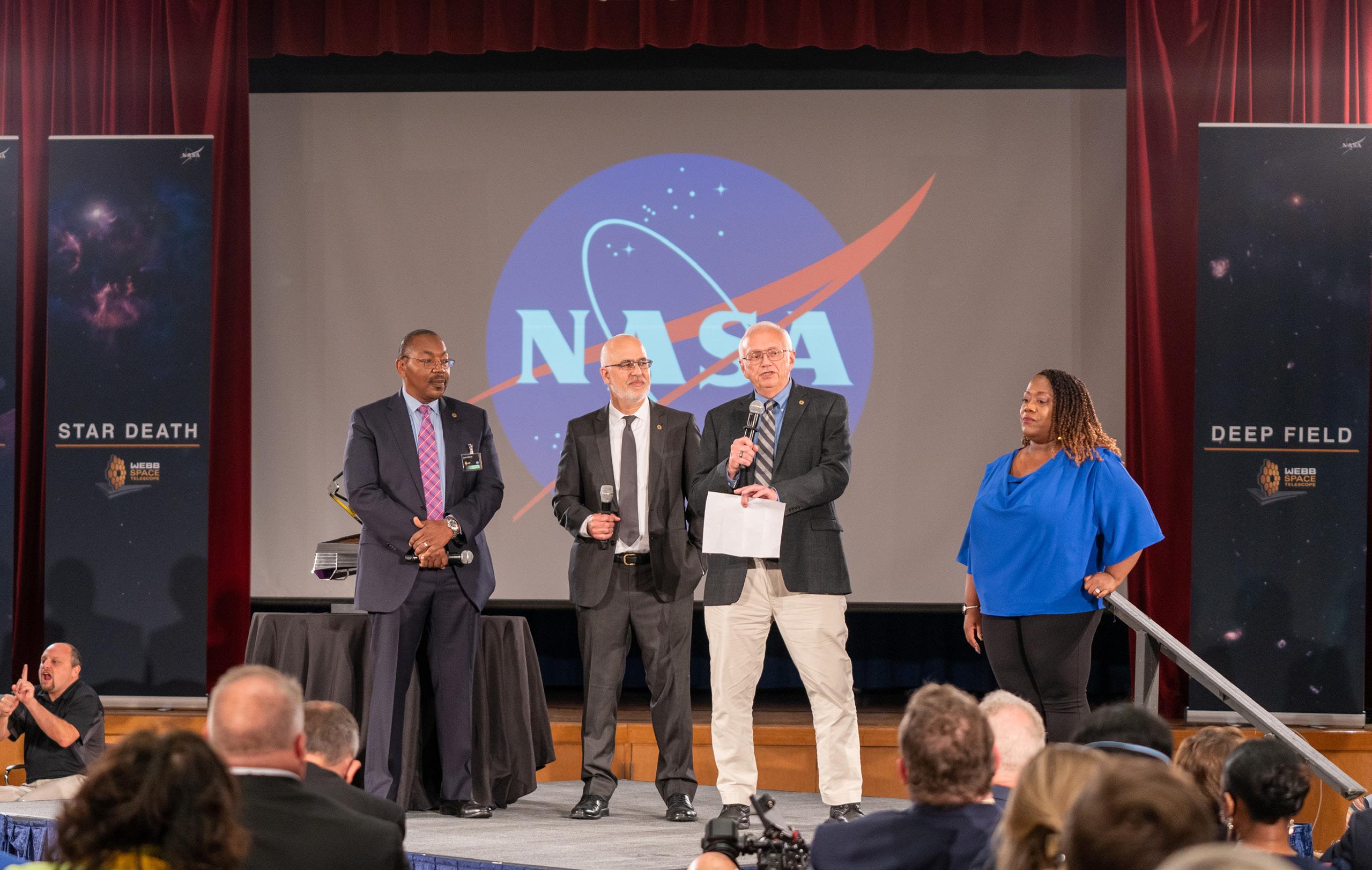5 minute read
CLIMATE SCIENCE

A GLOBAL CLIMATE LEADER
A LONG TRADITION OF STUDYING EARTH’S SYSTEMS
“For years, our nation and many of us have discussed, have lamented, have talked about the threat of climate change,” Vice President Kamala Harris said during an August 2022 speech. “Climate change has become a climate crisis. And a threat has now become a reality.”
Goddard is standing to meet that reality with its Earth scientists and Earth-observing missions. The year 2022 continued Goddard’s long tradition of leading the way in climate research and modeling, pushing the boundaries of how much we can learn about the way our precious planet works as a system and how that information can be harnessed to inform critical decisions about our future.
Climate Science Research - Modeling and Assimilation
Goddard is home to the most advanced climate modeling in the world, and the demand for such research is only increasing. Models are created from mathematical equations to help understand and ultimately simulate the processes of Earth systems. Using data points from satellites, models allow researchers to predict future climate systems, test hypotheses, and draw conclusions on past systems. Scientists and engineers at Goddard are at the forefront of the burgeoning wave of big data in climate science, and 2022 was no exception.
In June and July, heat waves were experienced across several continents. Temperatures soared above 104 degrees Fahrenheit in many places across Europe, North Africa, the Middle East, and Asia. Combining these observations with a version of the Global Modeling and Assimilation Office’s (GMAO) Goddard Earth Observing System (GEOS) global model, an image of the Eastern Hemisphere of Earth was created, showing surface air temperatures.
Modeling of the current phenomena around Earth helps with current and future understanding of Earth’s systems and what may be causing and impacting weather extremes.
Long-running observations from space from such programs as Landsat – which celebrated its 50th anniversary in July – provide crucial climate data for informing and improving modeling and projections. The mission is a partnership between NASA and the U.S. Geological Survey (USGS), and it has continued to provide images of Earth’s surface and changes to land coverage since the advent of Earthobserving satellites.
Christian Braneon, when he was part of the Goddard Institute for Space Studies (GISS), led a study that used Landsat historical data over Chicago to see the trends of surface heat severity over time. The results identified areas most amenable to green roofs and green infrastructure, which can have cooling effects that can mitigate urban heat. This project could serve as a reference for a replicated and scaled tool.
In addition to heat, another theme that was the topic of several pieces of research was the carbon cycle and the various ways that Earth’s systems interact with the cycle.
In April 2022, NASA’s Global Ecosystem Dynamics Investigation (GEDI) mission released its newest data product, showing the carbon stored by the above-ground forest biomass – a near-global estimate. Utilizing advanced statistical models, GEDI’s product is the first to include a well-described uncertainty for the estimates, allowing for an increased accuracy of the understanding of how Earth’s forests are changing and will further help with predictions of how much carbon could be released due to wildfires or deforestation.
Forests and trees make up a major part of the understanding of the carbon cycle, as does the ocean. NASA scientists Ivona Cetinić, Aimee Neeley, and others traced the carbon export path in the ocean by using DNA sequencing of individualized sinking particles, including microscopic fecal matter from phytoplankton. Published in Nature in April 2022, the research provides a pathway for combining DNA sequencing and ocean color measurements to improve modeling of ocean carbon exports. Looking forward, this research will prove to be useful as Goddard’s Phytoplankton, Aerosol, Cloud, ocean Ecosystem (PACE) mission will be able to analyze processes below the surface of the ocean as well.
The People of Climate Science
In May 2022, Cynthia Rosenzweig, senior research scientist and head of the Climate Impacts Group at GISS, was awarded the World Food Prize for her research in understanding the relationship between climate and food systems, as well as her modeling work for how both will change in the future. Her team’s modeling work was a foundational component of decisionmaking processes for strategies to adapt food systems amid the changing climate.
The World Food Prize is a prestigious award with a mission “to elevate innovations and inspire action to sustainably increase the quantity, quality, and availability of food for all.”
In July, another major honor – the NASA Robert H. Goddard Science Excellence Award – went to Amin Dezfuli for his work on how climate patterns affect bird migration. Dezfuli is a GMAO senior research scientist who focuses on various climate-related applications, including how largescale climate phenomena impact ecology and avian migration systems. A paper published in the Bulletin of the American Meteorological Society showed how Dezfuli and his team used 23 years of bird migration data in comparison with meteorological and climate model data. They found that variability of bird migration is strongly linked to air and sea surface temperature, which are key indicators of regional climate change.
Future of Climate Science Research
In a changing climate, answering critical questions about the complexities of Earth’s systems becomes increasingly important. One way Goddard is getting ahead of those questions is with a new platform called the Earth Information System (EIS), a pilot project that has innovated ways to integrate different types of data and modeling capabilities. EIS aims to make new connections that will enhance short- and long-term analysis and decision-making in support of preparation, mitigation, and climate resilience.
In the past year, the EIS team has:
• Used open science tools to integrate water cycle variables and models to examine the impact of human impacts on freshwater availability and hydrological extremes. EIS can now accurately characterize the drivers of floods and drought, along with their impacts. • Assessed the threat to coastal areas from multiple factors, including sea level rise and climate-induced hydrological changes. • Synthesized several NASA remote-sensing assets to automatically map the spread of fire events and develop representations of the causes of fires and their subsequent impacts on the ecosystem and hydrosphere. • Demonstrated state-of-theart examples of open-source science through collaboration environments that integrated
Earth science data sets, data analytics, Earth system models, and visualization tools on cloud infrastructure. • Created new science capabilities by reducing barriers to entry for NASA datasets.
EIS integration efforts enabled the genesis of a water quality modeling prototype, developed by an external research group.
The EIS team was able to rapidly accomplish its science and applications objectives through an innovative combination of traditional on-premise computer resources, along with emerging cloud-based services. The project will continue expanding on its focus areas – freshwater, fire, sea level change, and greenhouse gases – while leading the scientific community into the future of open science and user-friendly data.











